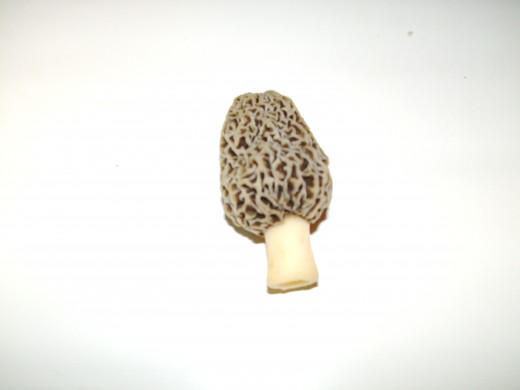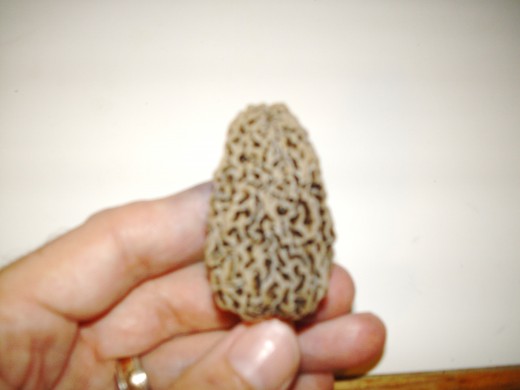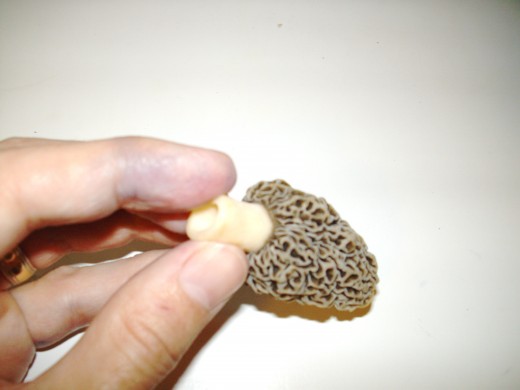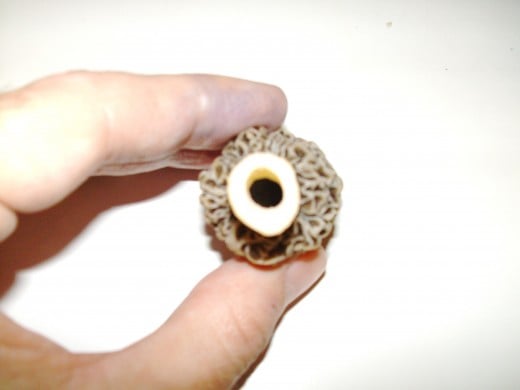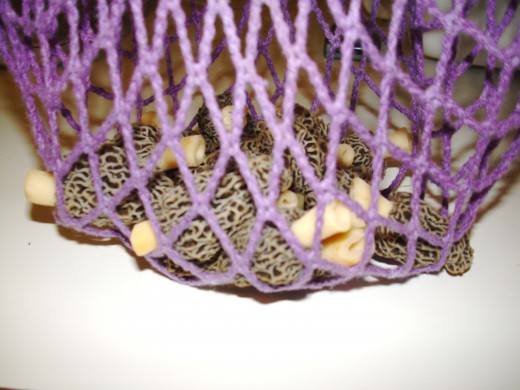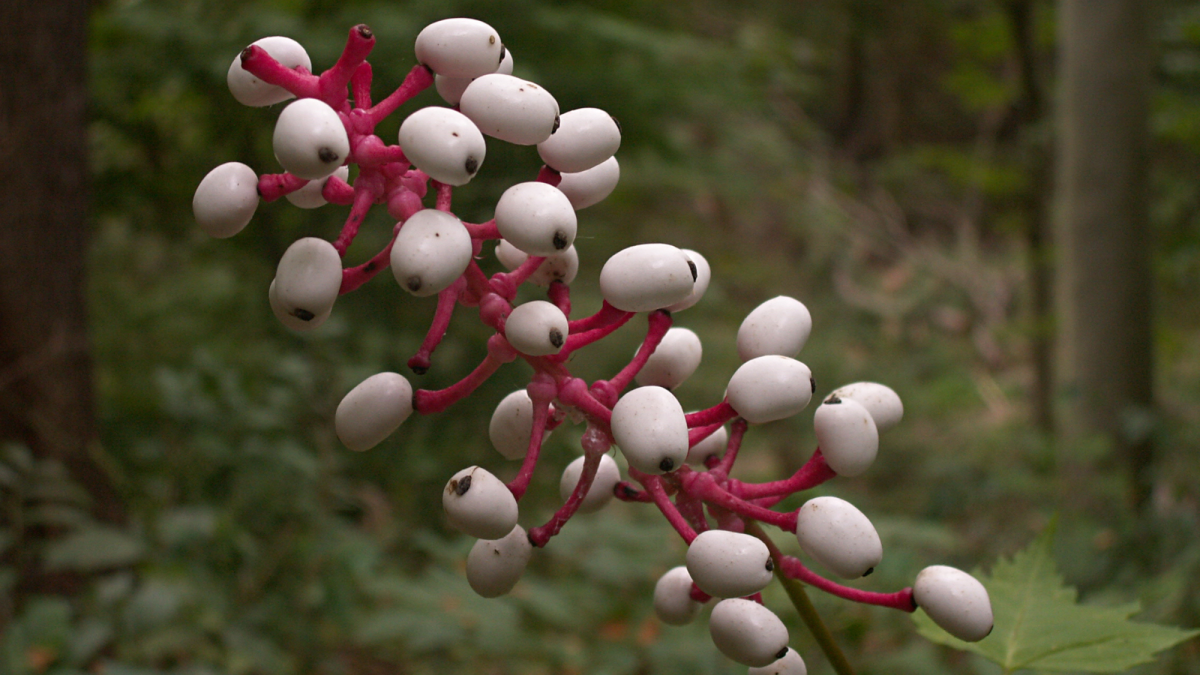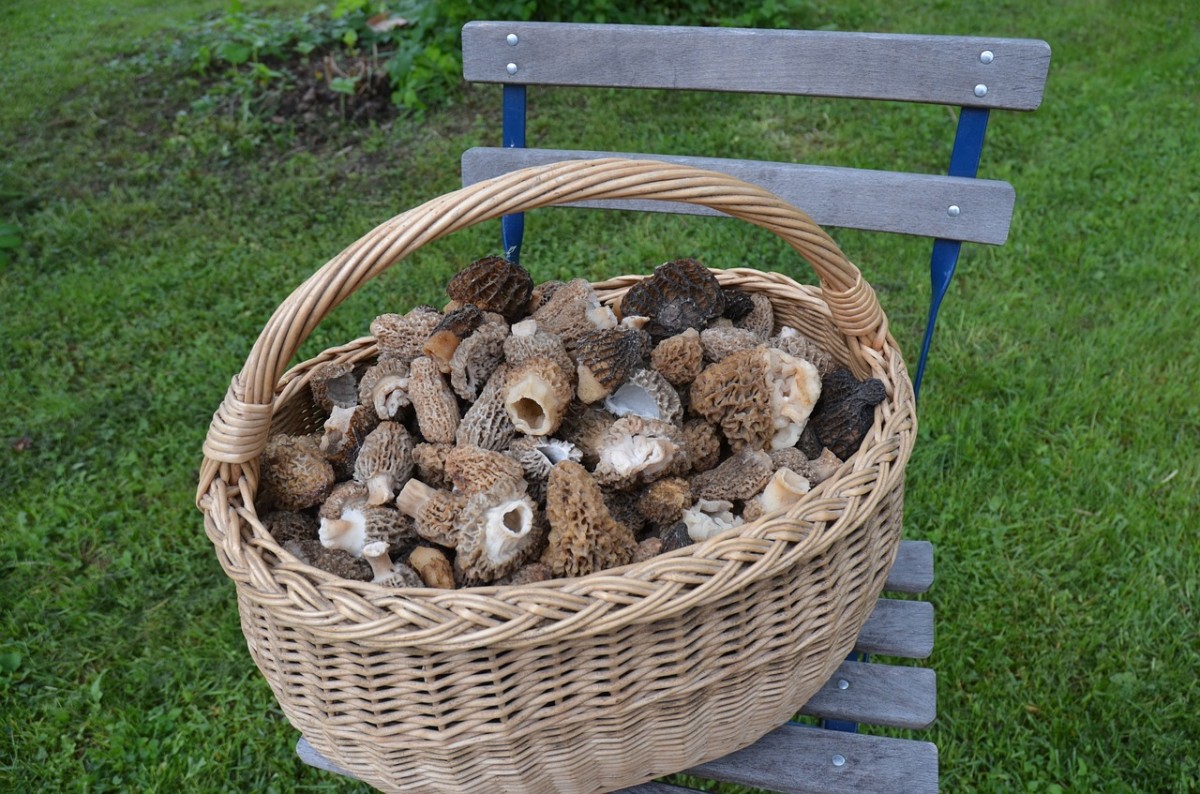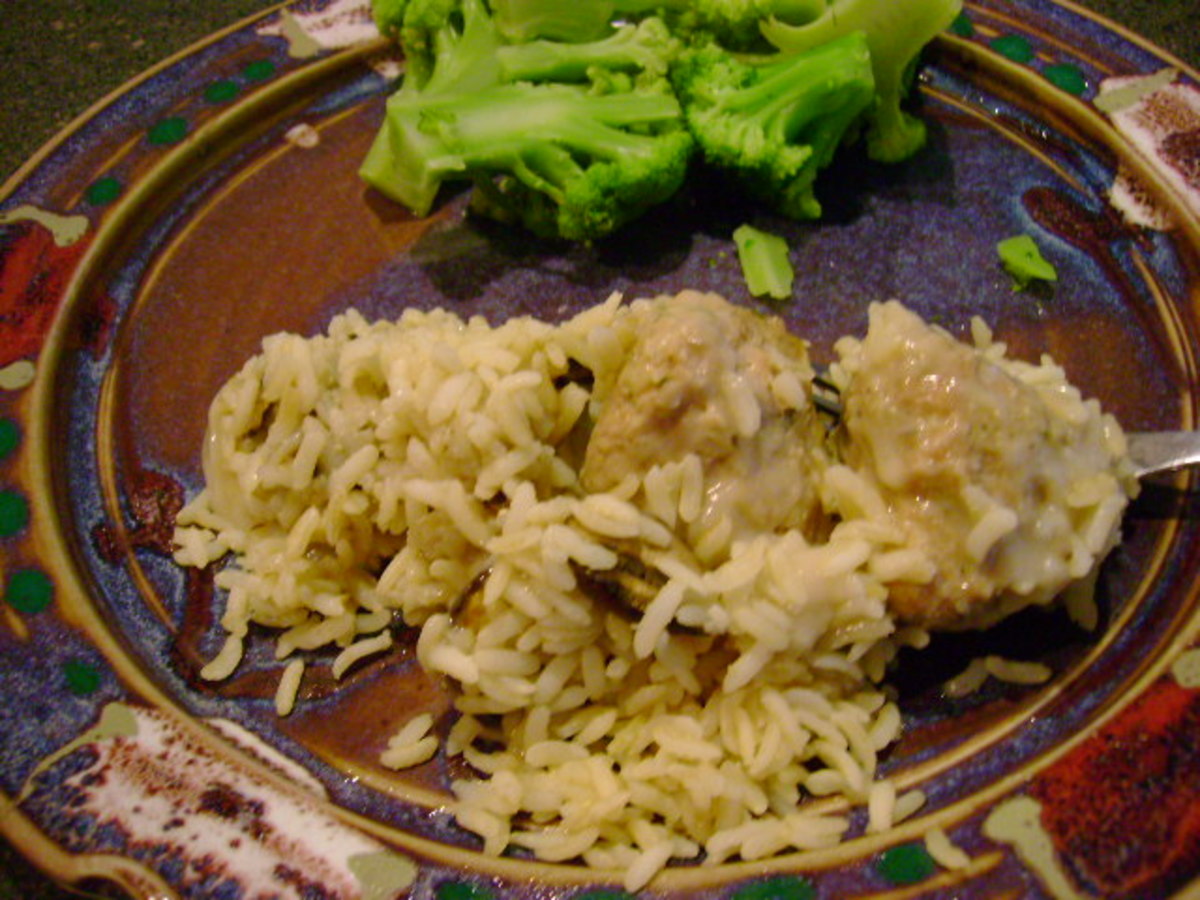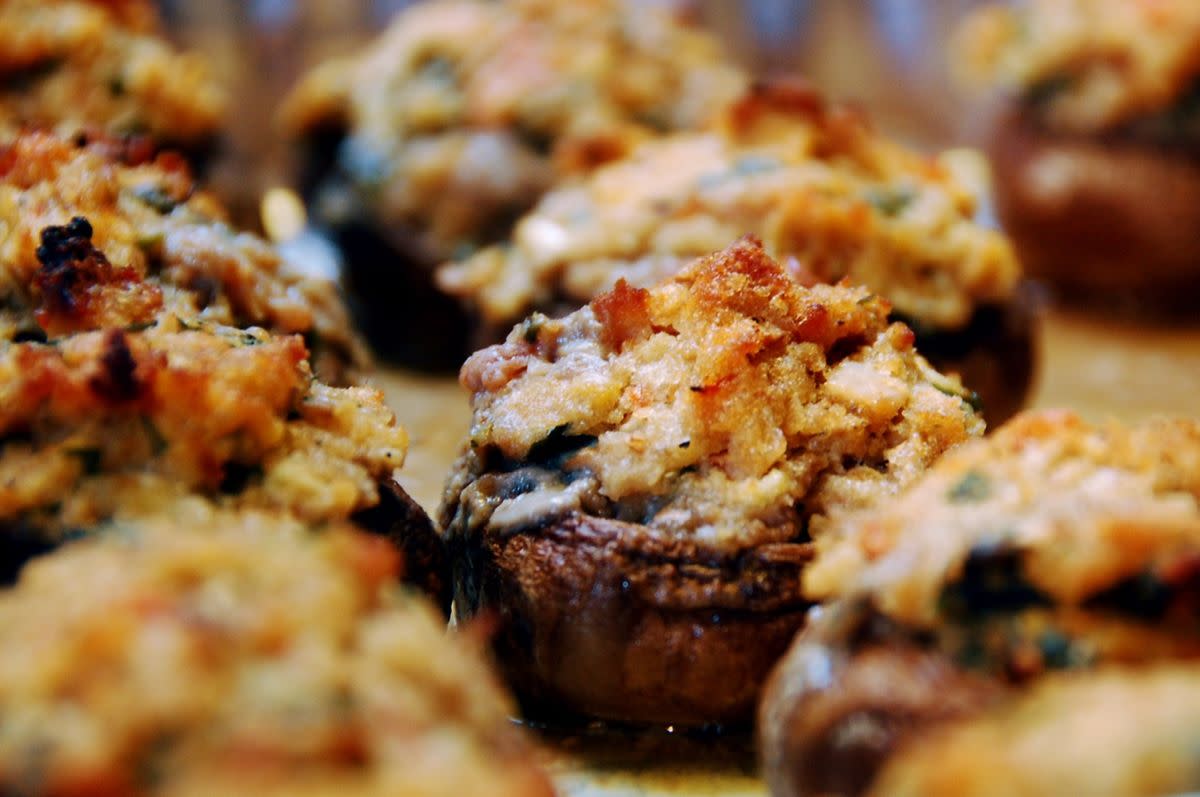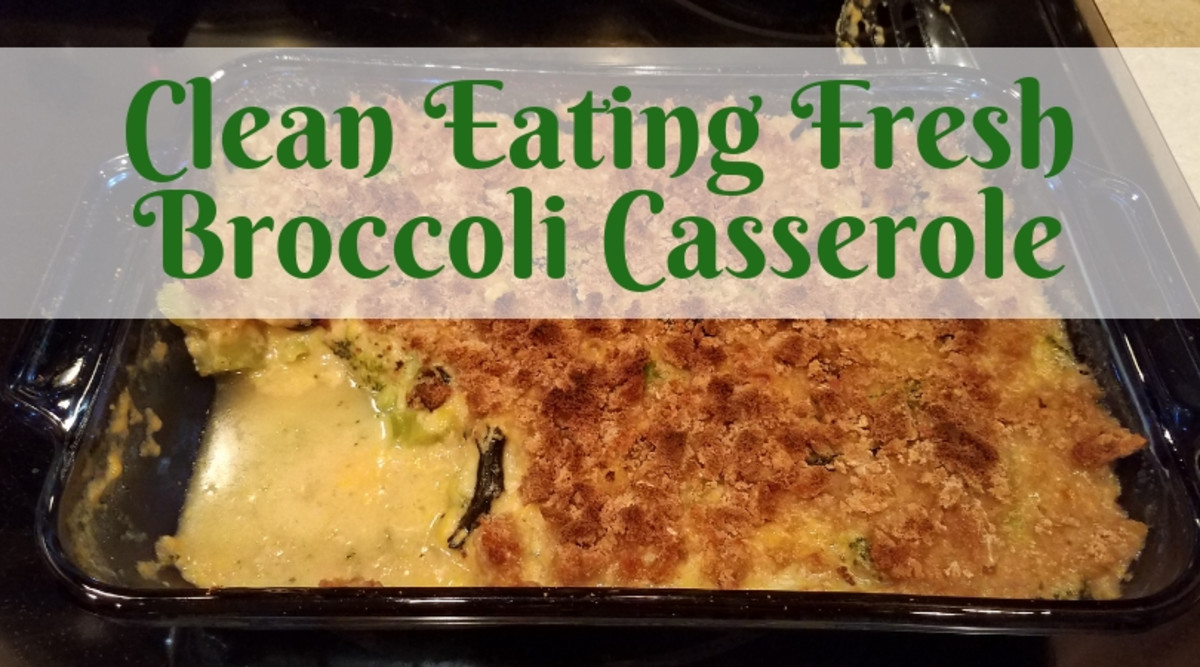Springtime is Morel Season!
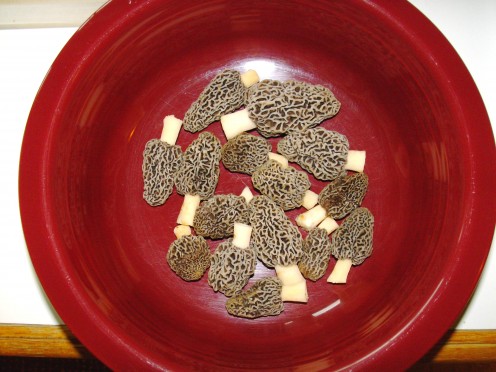
Morel mushrooms. My goodness, but they’re tasty. They have a meaty yet nutty kind of feel to them, and rather than simply soak up flavor like some mushrooms do, morels do some kind of flavor alchemy when you cook them, and you get something that’s much greater than the sum of the parts. The best thing is, they’re free—if you know where to look, and what to look for.
HOW much per pound!?
In gourmet stores, you can buy morels in season, and you might be able to find dried morels out of season, but they’re incredibly expensive. High-end restaurants buy them up at warp speed as soon as they hit the market, and the relative few that make it to places where regular folks can buy them are in great demand. Sure, you can buy them if you have the cash, but if you’re willing to go out and get a little wet, you can have as many as you can find, and might even get enough to share with your nearest and dearest. In this article, you’ll learn when you’ll have the best chance of finding morels, how to identify them, and one of a myriad ways of cooking them.
When to Look
In the Midwest of the United States, you want to go looking for morels from about the middle of April (which is early, but you never know) to toward the end of June (which is a bit late, but again, you never know). You have the best chance of finding them, like any mushroom, after a good rain. In his book The Omnivore’s Dillemma, author and whole foods advocate Michael Pollan tells a great story about finding wild morels after a forest fire and a rainstorm. You can’t always take the day off from work to go hunting morels after a minor natural disaster, though, so it’s easier to find a place where you know morels frequently grow, and visit it whenever you get the chance. Good luck on this.
More on Morels

Where to Look
Morel hunters can be very territorial, and while nobody’s going to shoot you or anything, it isn’t easy to get a morel hunter to tell you where he found his last haul. (If you’re an angler with a favorite spot, you know the sort of thing I mean, except magnify it about a hundred times.) Unless you’ve known a morel hunter since you were in grade school together, or perhaps have a friendship solidified in combat, you’re probably going to be on your own when you first start looking. If you own unfertilized, unpesticided land with hardwood trees on it, great! Start there. You'll have the best luck in spots where trees have recently fallen, burned, or been cut down. Apparently the decaying root system nourishes the morels. Get up early after an overnight rain and hike over to the back forty. Keep your eyes on the ground and watch your step.
If you live in the city or the ‘burbs, you can still find morels near you, if you live near a park. You’ll want to get off the beaten path, though. Get up early. Look for a wooded area with not a lot of undergrowth and, as mentioned above, keep your eyes on the ground and watch your step. Morel hunting, like fishing, is not a speed-oriented sport. Embrace the slow. Enjoy the quiet of the woods, which is not silence, but a different kind of ambient sound. Go carefully and really look at the ground. You may find nothing at all. That’s okay. You know the old saying about a bad day fishing? It applies to morel hunting as well.
You can also search on private land if (and only if!) you have permission of the landowner. He may ask for a cut; perhaps the first half-pound of mushrooms you find, or maybe half your entire haul. This is fair. Many deer hunters hunt on private land with the understanding that the landowner will get a nice venison steak or two. Same thing. Be grateful that the landowner is letting you harvest these delicacies on his land at all. Respect his property, do not litter, and hey, if you see litter, pick it up too, along with the morels (not in the same bag!). The owner will appreciate the gesture and welcome you back.
Use a mesh bag to carry your morels. That way, the spores will be spread as you walk around, leading to more bountiful harvests in the future. Carry a sharp knife to cut through the stalk as close to the ground as you can. This will minimize damage to the mysterious part of the morel that lives below the surface. Actually, nobody really understands why morels grow where and when they do. They're resistant to domestication, which is why they're so expensive and sought-after.
What to Look For
Morels look like the photos below. Read the captions for further explanation.
Morels Look Like This:
Click thumbnail to view full-size




Beware the False Morel!
There is a mushroom that bears a superficial resemblance to the morel. Once you’ve seen a real morel, you will be able to easily spot a false one. The stalk of the false morel is more spongy, not smooth. The cap of the false morel is attached to the stalk at the top only, not at its base. It can be “rung” as if the cap were a bell and the stalk were its clapper. And the nooks and crannies in the cap of a false morel are shallow and superficial, unlike the deep ones in a true morel. Once you know what you’re looking for, you won’t be fooled. But! If you’re not absolutely, positively, one-hundred-per-cent certain-sure that you haven't got a false morel, do not eat it!
False Morels Can KILL YOU!!!
Now that I’ve got your attention, you can calm down again and learn how to become certain-sure that you’re not going to die.
When in doubt, (and your first time out, you are in doubt) take your probably-morels and visit the nice folks at the local extension office of your nearest land-grant college*. They will be able to tell you if you’ve got delicious mushroom nirvana or a slow, agonizing death on a stick. Listen to them. If you’ve got a good haul, maybe let them have a few? Everyone likes to be appreciated.
*This is for folks in the USA. If you're in, say, Ontario, Canada, you'll probably also be able to find morels, but I don't know where you should go to be sure you haven't harvested pain and death by mistake. Perhaps someone out there from Canada can tell us in the Comments?
Gear You Might Need
How to Cook Them
Do not try to eat morels raw. Unlike some other mushrooms, which can be delicious just as you found them, morels are no good raw. They don't taste all that great raw, and they're difficult to digest. Also, you don't need to wash morels (or any mushroom for that matter). You'll just get them waterlogged. To clean them, simply shake the mesh bag a few times. Any dirt will fall out. Here’s one of the best ways I’ve found to eat morels. You’ll need:
Ingredients:
- Morels (duh)
- Fresh asparagus (find it, grow your own, or get it at the farmers’ market. Luckily, asparagus season and morel season overlap)
- Butter
- Garlic
- Black pepper
- Linguini (you can make your own if you’re hard-core. I usually buy it.)
- More butter
- Heavy cream
- Parmesan cheese
- Dry white wine
Equipment:
- Wide frying pan or skillet (for the morels and asparagus)
- Large saucepan (for the noodles)
- A double-boiler (for the sauce)
- A wooden spoon or two (to stir the morels and asparagus and the sauce)
- Collandar (to drain the noodles)
- The usual serving vessels and utensils
Boil enough water in your large saucepan to cover your linguini. While it’s heating up, trim the bottom ends off your asparagus—they can be fibrous and not all that appetizing. Mince your garlic. Put some water in the bottom of your double-boiler and put on the top part. Put it on medium heat and melt a generous amount of butter, maybe half a stick. When the butter has melted, add a splash of the wine and the cream. Stir. Grate in some of the Parmesan. Stir. Watch this pot! You do not want the sauce to boil. If it does, it won’t be as delicious. Stir it often, and fiddle with it as it cooks, adding more cream, butter, or wine as you think you should. It will eventually thicken. Taste it from time to time. Maybe add a bit of pepper if you like.
Okay, by now the water should be boiling, or close to it. Once it boils, put in the noodles. Give them a stir every now and then to gauge their done-ness. While the noodles are cooking and the sauce is thickening (Hey, why not check the sauce again now? Give it a stir, maybe add some more Parmesan. Use a clean teaspoon to taste it and see how you're doing.) put some butter in the pan and melt it over high heat. This will not take long. Add the minced garlic. Now add the morels. They will start to cook and soak up the butter fairly quickly. Keep them moving in the pan. Check your sauce again. Check the noodles. How are the morels doing? Grind in some pepper if you like. Check your sauce. When the morels look like they’re nearly cooked, check your sauce. Now check the noodles. Are they done? Good. Now check the sauce. Now put the asparagus in with your morels. Check the sauce. Drain the noodles. Check the sauce. Jiggle the morels and the asparagus around. The asparagus should not be overcooked, just heated through. They will take on a bright green hue when they’re ready, which will be—Check the sauce!—which will be soon. When everything’s ready, serve.
You can just dump everything into one bowl, mix it all together, and serve it like that, but I find that separate bowls for the pasta, the sauce, and the morel/asparagus mixture are nicer. That way you can put the noodles on your plate, ladle some sauce on them, and nicely lay the morels and asparagus on top, like the cherries on a banana split. It’s prettier that way.
More Hubs about Morels and Other Mushrooms
- Edible Wild Mushrooms: Chicken of the Woods
There are other edible wild mushrooms besides morels. Here's an article about one of them. - How To Preserve Wild Morel Mushrooms
Three ideas on how to preserve any morels you can't eat right away.

